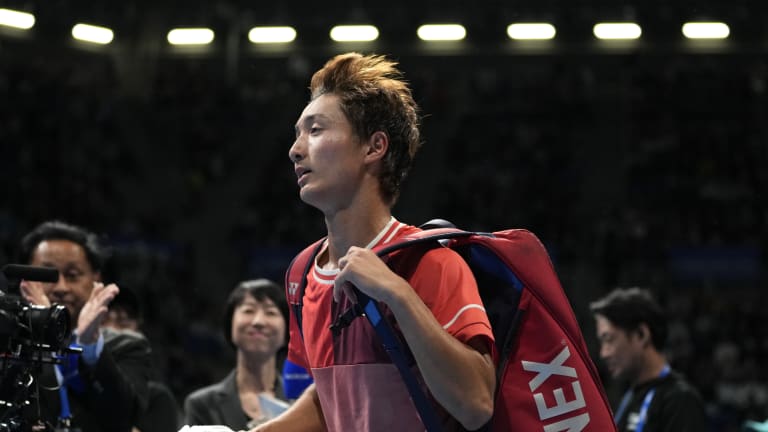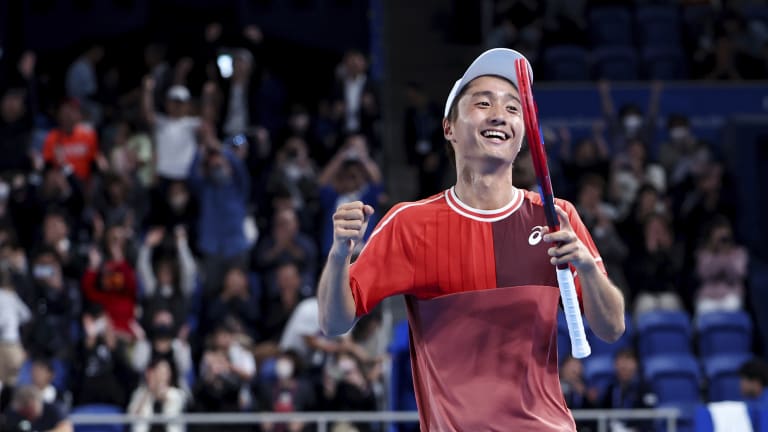ATP Tokyo, Japan
As Shintaro Mochizuki reminds us, this is the time of year for surprises and Cinderellas
By Oct 21, 2023ATP Tokyo, Japan
Carlos Alcaraz after Tokyo injury: "I have the best physio in the world"
By Sep 27, 2025ATP Tokyo, Japan
Carlos Alcaraz injures ankle, but still advances in straights in Tokyo
By Sep 25, 2025ATP Tokyo, Japan
Fresh off heroics at Laver Cup in San Francisco, Taylor Fritz makes winning start in Tokyo
By Sep 25, 2025ATP Tokyo, Japan
Frances Tiafoe smashes his racket in first-round Tokyo loss
By Sep 24, 2025ATP Tokyo, Japan
Arthur Fils saves championship point in Tokyo, snaps Ugo Humbert's flawless record in finals
By Oct 01, 2024ATP Tokyo, Japan
ATP Tokyo Final Preview: Arthur Fils vs. Ugo Humbert
By Sep 30, 2024ATP Tokyo, Japan
Tomas Machac snatches win from Tommy Paul with late Tokyo push; gets Alex Michelsen next
By Sep 28, 2024ATP Tokyo, Japan
Brandon Nakashima sinks Frances Tiafoe in Tokyo before Ben Shelton denies Reilly Opelka
By Sep 26, 2024ATP Tokyo, Japan
Alex Michelsen surges past ailing Stefanos Tsitsipas in Tokyo; Tommy Paul cruises
By Sep 26, 2024As Shintaro Mochizuki reminds us, this is the time of year for surprises and Cinderellas
Will the 20-year-old be a player for all seasons, or, just a legend of the fall?
Published Oct 21, 2023
Advertising

Mochizuki was ranked No. 215 at the start of the Japan Open Tennis Championships.
© AP
Advertising

Two of Mochizuki's three wins during his breakout run this week came in tight deciding sets: 7-6 (2) and 7-5.
© Yomiuri
Advertising
Result
SF - Men's Singles
3 4
6 6